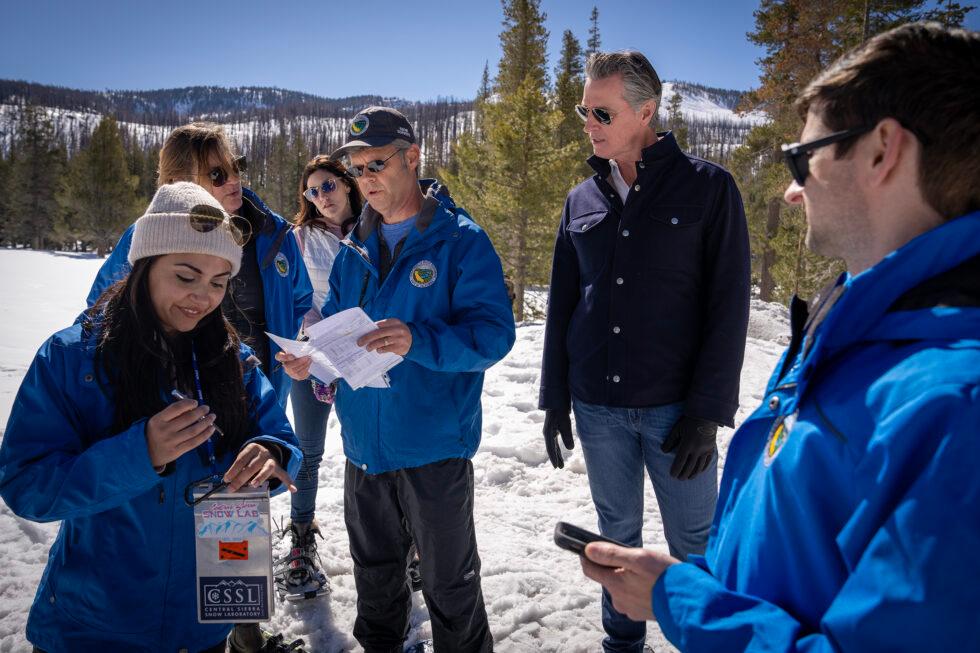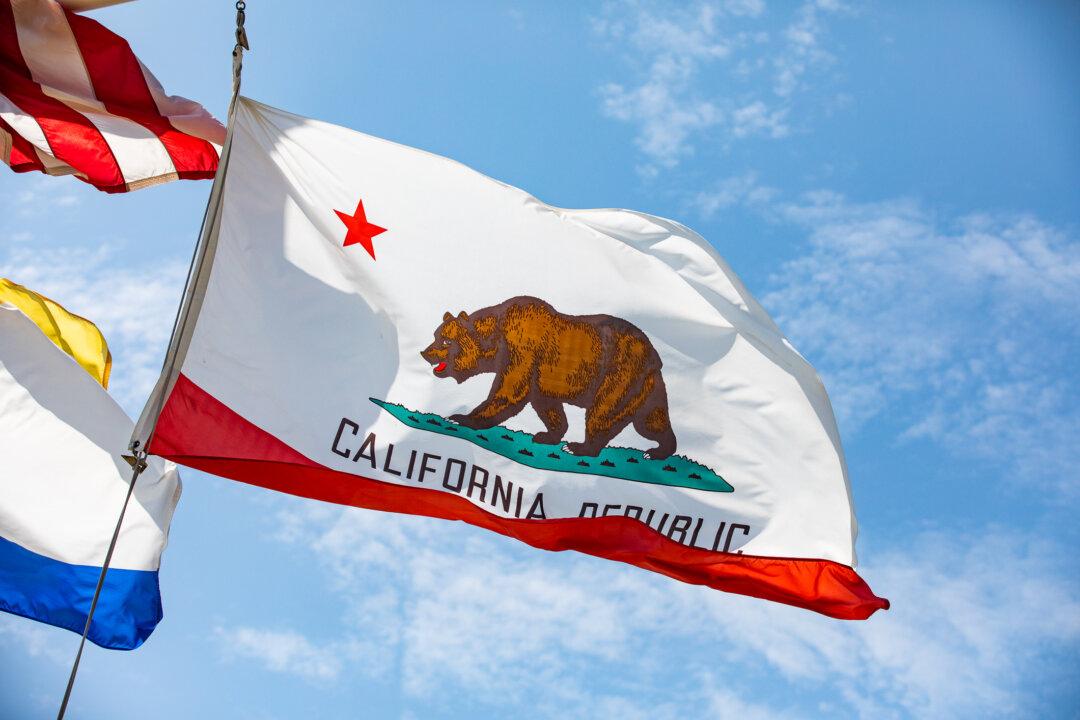Standing atop a snowy summit south of Lake Tahoe alongside state water officials, Gov. Gavin Newsom on April 2 unveiled an updated water plan, detailing guidelines for capturing and storing stormwater and streamlining groundwater recharging in California.
The five-year update, mandated by the State Water Code, will enhance California’s resilience against various weather challenges.





